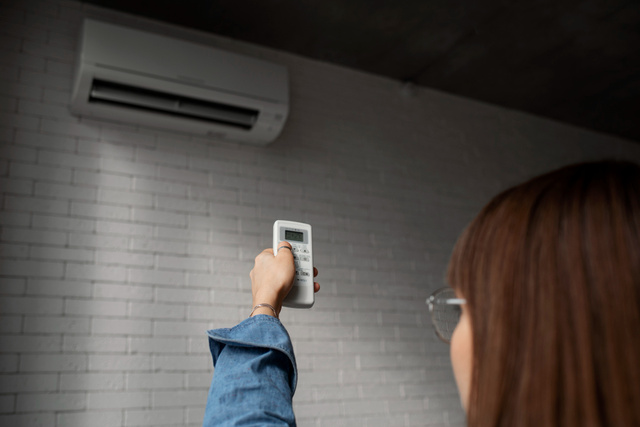Allergies can be a persistent nuisance, particularly in environments where air quality is not optimally maintained. Understanding how your HVAC system can influence indoor air quality and allergen levels is key to creating a healthier living or working space. This blog offers practical tips and insights on maintaining your HVAC system to reduce the presence of allergens, thus providing relief to those suffering from allergy symptoms. Whether it’s at home or in the office, learn how to harness the power of your HVAC system for a clearer, more comfortable environment.
Understanding Allergens and Your HVAC System
Allergens in your living or working environment, such as pollen, dust mites, pet dander, and mold spores, can significantly impact air quality and exacerbate allergy symptoms. Your HVAC system plays a pivotal role in managing these allergens. Understanding how allergens interact with your HVAC system is the first step in creating an allergy-friendly environment.
An HVAC system circulates air throughout a space, and with it, the potential allergens. Without proper filtration and maintenance, it can become a conduit for distributing allergens throughout your home or office. However, when well-managed, it can also act as a powerful tool in filtering and reducing the presence of these irritants.
Key to this is the HVAC system’s air filters. These filters are designed to trap and contain airborne particles, including common allergens. However, their effectiveness greatly depends on the type of filter used and how often they are changed or cleaned. High-Efficiency Particulate Air (HEPA) filters, for instance, are known for their ability to trap smaller particles, which are often missed by standard filters.
Moreover, the humidity level controlled by the HVAC system can also affect allergen levels. High humidity fosters mold growth and dust mite populations, while air that is too dry can exacerbate respiratory symptoms. Maintaining an optimal humidity level is thus crucial in mitigating allergy symptoms.
By understanding these dynamics, you can leverage your HVAC system to not just regulate temperature, but also to create a cleaner, more allergen-free environment.
Optimizing Air Filters for Allergen Reduction
The cornerstone of using your HVAC system to combat allergies lies in the choice and maintenance of air filters. Air filters are the first line of defense against circulating allergens such as dust, pollen, pet dander, and mold spores. Optimizing these filters can significantly reduce allergy symptoms for a more comfortable indoor environment.
When selecting filters, consider the Minimum Efficiency Reporting Value (MERV) rating. This rating measures the effectiveness of air filters. Filters with higher MERV ratings can trap smaller particles, which are often the most bothersome for allergy sufferers. High-Efficiency Particulate Air (HEPA) filters, with their superior filtering capabilities, are particularly effective for those with severe allergies, as they can capture particles as small as 0.3 microns.
However, higher-rated filters may restrict airflow in some HVAC systems. It’s essential to choose a filter that matches your system’s specifications to avoid strain on the HVAC unit. Consulting with a HVAC professional can help in selecting the appropriate filter.
Regular replacement or cleaning of air filters is equally important. Over time, filters become clogged with captured particles, reducing their efficiency and potentially circulating trapped allergens back into the air. It’s generally recommended to change filters every 60 to 90 days, but more frequent changes may be necessary in households with pets or high allergen exposure.
By carefully selecting and maintaining air filters, you can greatly enhance your HVAC system’s role in reducing allergens and improving indoor air quality for allergy sufferers.
Regular Maintenance: A Key to Allergy Relief
Consistent and thorough maintenance of your HVAC system is crucial in mitigating allergy symptoms. A well-maintained system ensures that air circulated throughout your space is clean and free from excess allergens. Neglecting regular maintenance can lead to the accumulation of dust, mold, and other allergens in the system, exacerbating allergy symptoms.
The maintenance routine should include several key steps:
Regular Filter Changes: As previously mentioned, changing or cleaning HVAC filters regularly is essential. This simple step can significantly reduce the circulation of allergens.
Cleaning Ducts: Over time, HVAC ducts can accumulate dust and other allergens. Having these ducts professionally cleaned every few years can prevent these particles from being circulated through your home or office.
Inspecting and Cleaning Coils and Blowers: The components of your HVAC system, including coils and blowers, should be inspected and cleaned regularly. These components can harbor mold and allergens, which are then distributed through the air.
Checking for Mold: Mold growth in and around your HVAC system can be a major contributor to poor air quality. Regular inspections can identify mold problems, which should be addressed promptly to prevent spores from spreading.
Servicing the System: Annual servicing by a professional not only ensures that your HVAC system is functioning optimally but also helps in identifying potential issues that could exacerbate allergy problems.
By maintaining your HVAC system properly, you not only extend its lifespan but also create a healthier living or working environment, particularly for those suffering from allergies.
Advanced HVAC Solutions for Enhanced Air Quality
In the quest to combat allergies and improve indoor air quality, advancements in HVAC technology have led to sophisticated solutions that offer enhanced allergen control. These cutting-edge systems and add-ons are designed to filter and purify air more effectively, providing significant relief for allergy sufferers.
One of the notable innovations is the integration of HEPA filters into HVAC systems. HEPA filters are highly effective in trapping microscopic allergens, such as pollen, dust mites, and pet dander, that traditional filters might miss. Installing a HEPA filter can drastically improve the air quality in your home or office.
Another advanced solution is the use of UV light purifiers. These purifiers use ultraviolet light to kill mold, bacteria, and viruses in the air, further reducing the presence of allergens and pathogens. UV light purifiers can be installed within the ductwork of your HVAC system, ensuring that air passing through is sanitized.
Additionally, air purifiers and cleaners that work in conjunction with your HVAC system can provide an extra layer of filtration and purification. These standalone units can target specific rooms or areas, offering localized relief from allergens.
Smart HVAC systems equipped with air quality sensors also represent a significant advancement. These systems can monitor the levels of various pollutants and allergens in real-time and adjust the filtering and ventilation accordingly.
By embracing these advanced HVAC solutions, you can create an indoor environment that not only feels comfortable but is also healthier, reducing the impact of allergens and improving the overall quality of life for those with allergies.

